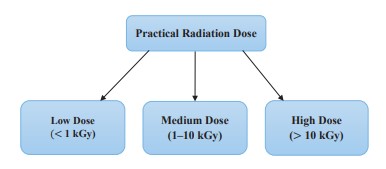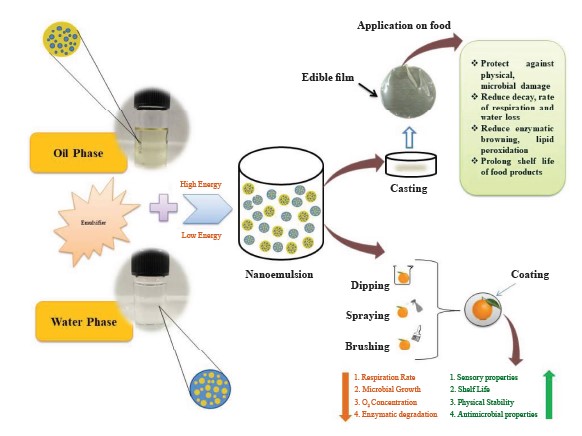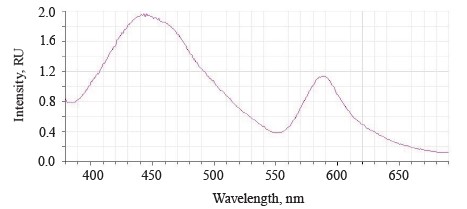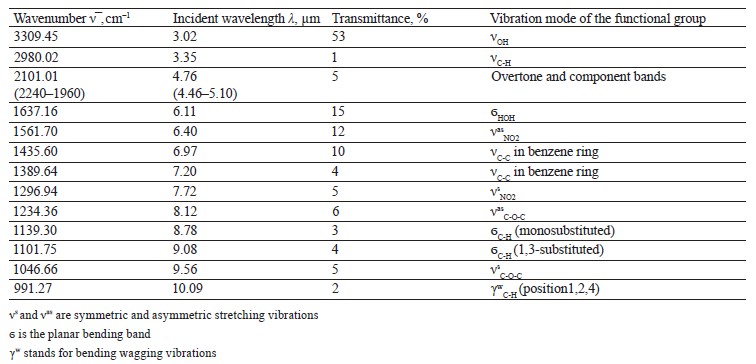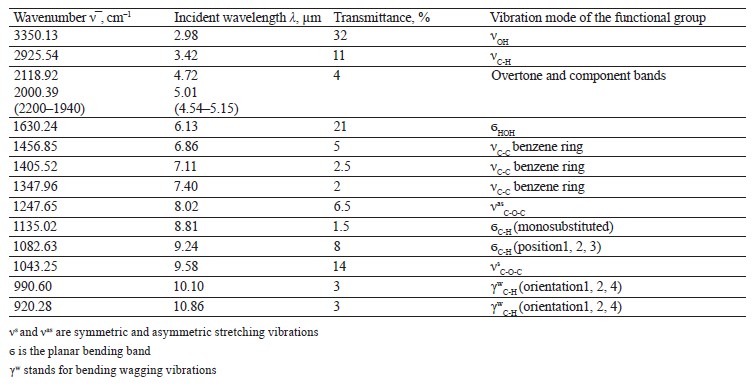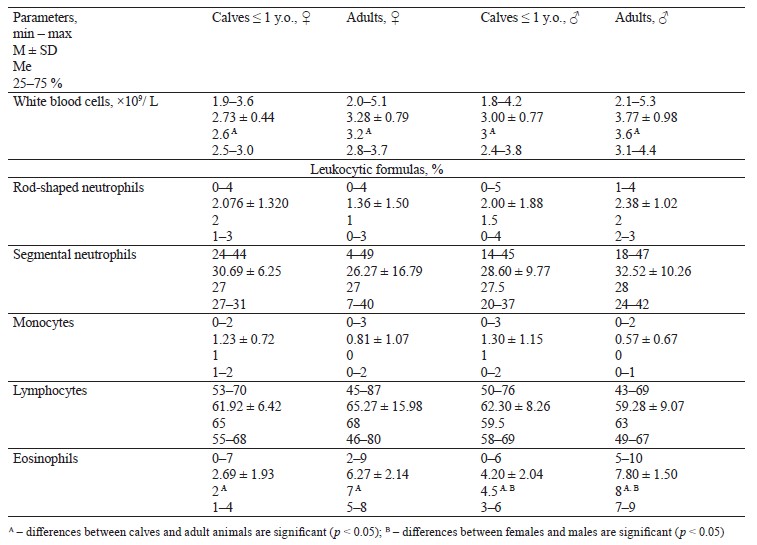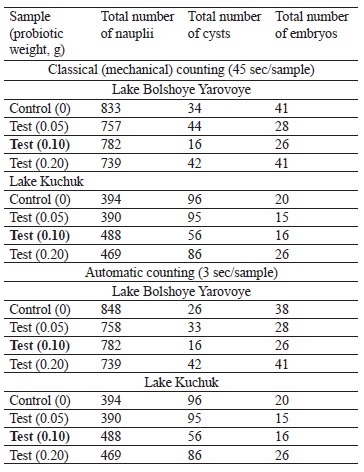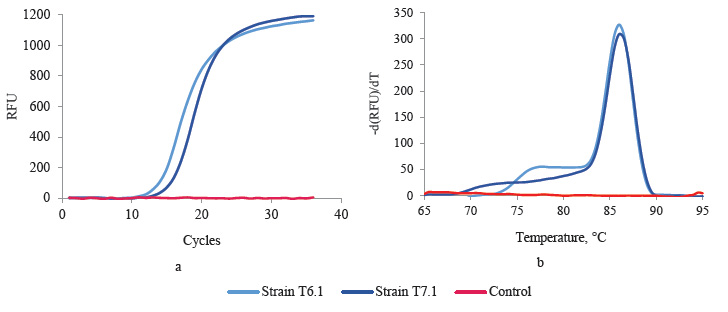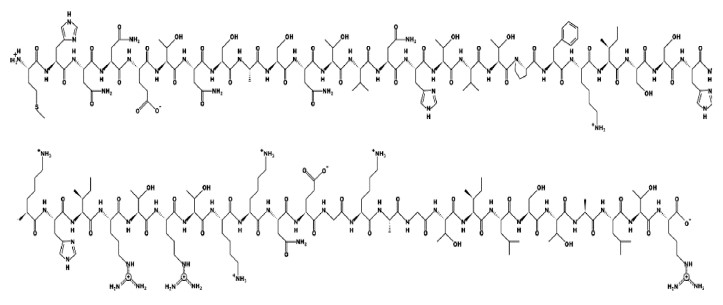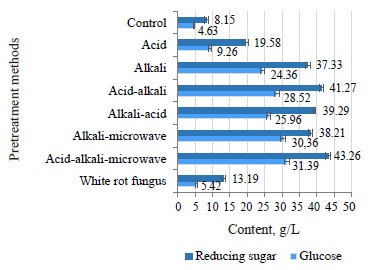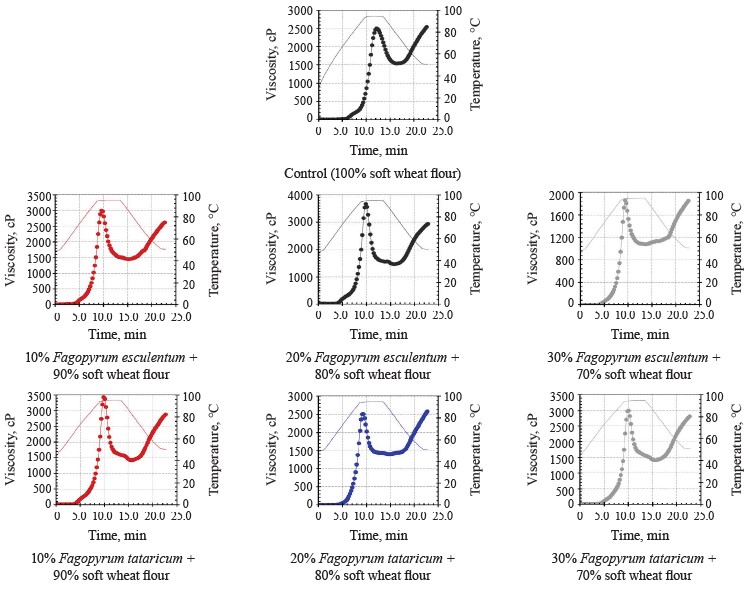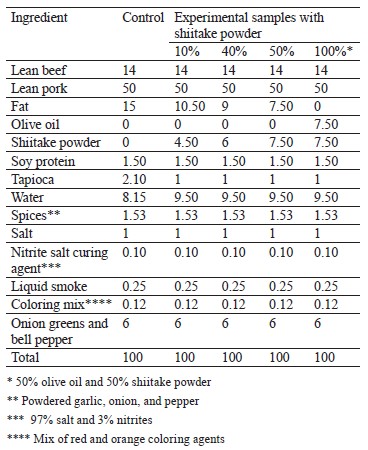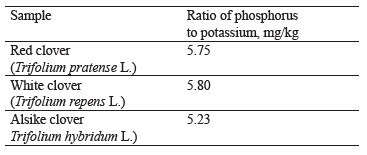Volume 12, Issue 1, 2024
9458
Abstract
Tables and figures
There are two main types of radiation: ionizing and non-ionizing. Radiations are widely distributed in the earth’s crust with small amounts found in water, soil, and rocks. Humans can also produce them through military, scientific, and industrial activities. Ionizing and nonionizing radiations have a wide application in the food industry and medicine. γ-rays, X-rays, and electron beams are the main sources of radiation used in the food industry for food processing. This review discusses advantages and disadvantages of ionizing radiation on microorganisms and its potential applications in the food industry. We also looked at its advantages and disadvantages.
Studies have revealed that ionizing radiation is used in the food industry to inactivate microorganisms in food products to improve hygiene, safety, and extend shelf life. Microorganisms such as bacteria and fungi are susceptible to high doses of irradiation. However, some bacterial and fungal species have developed an exceptional ability to withstand the deleterious effect of radiation. These organisms have developed effective mechanisms to repair DNA damage resulting from radiation exposure.
Currently, radiation has become a promising technology for the food industry, since fruits, tubers, and bulbs can be irradiated to delay ripening or prevent sprouting to extend their shelf life.
Studies have revealed that ionizing radiation is used in the food industry to inactivate microorganisms in food products to improve hygiene, safety, and extend shelf life. Microorganisms such as bacteria and fungi are susceptible to high doses of irradiation. However, some bacterial and fungal species have developed an exceptional ability to withstand the deleterious effect of radiation. These organisms have developed effective mechanisms to repair DNA damage resulting from radiation exposure.
Currently, radiation has become a promising technology for the food industry, since fruits, tubers, and bulbs can be irradiated to delay ripening or prevent sprouting to extend their shelf life.
5954
Abstract
Tables and figures
Chitosan reacts with amino acids and hydrolyzed whey proteins to produce biologically active complexes that can be used in functional foods. The research objective was to obtain chitosan biocomposites with peptides and amino acids with improved antioxidant and sensory properties.
The research featured biocomposites of chitosan and succinylated chitosan with whey peptides and amino acids. The methods of pH metry and spectrophotometry were employed to study the interaction parameters between polysaccharides and peptides, while colorimetry and spectrophotometry served to describe the amino acids content. The antiradical effect was determined by the method of fluorescence recovery. Pure compounds and their complexes underwent a sensory evaluation for bitterness.
Chitosan and succinylated chitosan formed complexes with whey peptides and such proteinogenic amino acids as arginine, valine, leucine, methionine, and tryptophan. The equimolar binding of tryptophan, leucine, and valine occurred in an aqueous chitosan solution (in terms of glucosamine). Methionine appeared to be the least effective in chitosan interaction, while arginine failed to complex both with chitosan and succinylated chitosan. Chitosan and succinylated chitosan biocomposites with peptides and leucine, methionine, and valine proved to be less bitter that the original substances. The samples with arginine maintained the same sensory properties. Chitosan complexes with tryptophan and peptides increased their antioxidant activity by 1.7 and 2.0 times, respectively, while their succinylated chitosan complexes demonstrated a 1.5-fold increase.
Chitosan and succinylated chitosan biocomplexes with tryptophan and whey protein peptides had excellent antioxidant and sensory properties. However, chitosan proved more effective than succinylated chitosan, probably, because it was richer in protonated amino groups, which interacted with negatively charged amino acids groups.
The research featured biocomposites of chitosan and succinylated chitosan with whey peptides and amino acids. The methods of pH metry and spectrophotometry were employed to study the interaction parameters between polysaccharides and peptides, while colorimetry and spectrophotometry served to describe the amino acids content. The antiradical effect was determined by the method of fluorescence recovery. Pure compounds and their complexes underwent a sensory evaluation for bitterness.
Chitosan and succinylated chitosan formed complexes with whey peptides and such proteinogenic amino acids as arginine, valine, leucine, methionine, and tryptophan. The equimolar binding of tryptophan, leucine, and valine occurred in an aqueous chitosan solution (in terms of glucosamine). Methionine appeared to be the least effective in chitosan interaction, while arginine failed to complex both with chitosan and succinylated chitosan. Chitosan and succinylated chitosan biocomposites with peptides and leucine, methionine, and valine proved to be less bitter that the original substances. The samples with arginine maintained the same sensory properties. Chitosan complexes with tryptophan and peptides increased their antioxidant activity by 1.7 and 2.0 times, respectively, while their succinylated chitosan complexes demonstrated a 1.5-fold increase.
Chitosan and succinylated chitosan biocomplexes with tryptophan and whey protein peptides had excellent antioxidant and sensory properties. However, chitosan proved more effective than succinylated chitosan, probably, because it was richer in protonated amino groups, which interacted with negatively charged amino acids groups.
10524
Abstract
Tables and figures
Recently, there has been an increasing trend in the food and pharmaceutical industries towards using nanotechnological approaches to drug delivery and active packaging (edible coatings and films). In the food sector, nanoemulsions are the most promising technology for delivering active components and improving the barrier, mechanical, and biological properties of packaging to ensure the safety and quality of food products, as well as extend their shelf life.
For this review, we used several databases (Google Scholar, Science Direct, PubMed, Web of Science, Scopus, Research Gate, etc.) to collect information about nanoemulsions and their role in edible packaging.
We searched for articles published between 2015 and 2022 and described different scientific approaches to developing active packaging systems based on nanoemulsions, as well as their high-energy and low-energy synthesis methods. We also reviewed the uses of different types of essential oil-based nanoemulsions in the packaging of food products to prolong their shelf life and ensure safety. Non-migratory active packaging and active-release packaging systems were also discussed, as well as their advantages and disadvantages.
For this review, we used several databases (Google Scholar, Science Direct, PubMed, Web of Science, Scopus, Research Gate, etc.) to collect information about nanoemulsions and their role in edible packaging.
We searched for articles published between 2015 and 2022 and described different scientific approaches to developing active packaging systems based on nanoemulsions, as well as their high-energy and low-energy synthesis methods. We also reviewed the uses of different types of essential oil-based nanoemulsions in the packaging of food products to prolong their shelf life and ensure safety. Non-migratory active packaging and active-release packaging systems were also discussed, as well as their advantages and disadvantages.
5486
Abstract
Tables and figures
The industrial water contamination with synthetic dyes is currently a cause for concern. This paper introduces composite hydrogels as alternative scavengers of soluble dyes.
This research used kinetic models and adsorption isotherms to test composite exopolysaccharide hydrogels extracted from Nostoc commune V., pectin, and starch for their ability to remove methylene blue from water.
The exopolysaccharides demonstrated a rather low extraction yield and a crystallinity percentage of 38.21%. However, the crystallinity increased in the composite hydrogels (48.95%) with heterogeneous surface. The pseudo-second-order kinetic model served to explain the adsorption mechanism at pH 8 and pH 11, while the Elovich model explained the adsorption mechanism at pH 5. When in acid fluid, the hydrogels had a heterogeneous surface, whereas alkaline fluid resulted in a homogeneous surface. The Temkin adsorption model showed a good fit in the treatments.
At a basic pH value, composite exopolysaccharide-based hydrogels showed good results as scavengers of low-concentration methylene blue.
This research used kinetic models and adsorption isotherms to test composite exopolysaccharide hydrogels extracted from Nostoc commune V., pectin, and starch for their ability to remove methylene blue from water.
The exopolysaccharides demonstrated a rather low extraction yield and a crystallinity percentage of 38.21%. However, the crystallinity increased in the composite hydrogels (48.95%) with heterogeneous surface. The pseudo-second-order kinetic model served to explain the adsorption mechanism at pH 8 and pH 11, while the Elovich model explained the adsorption mechanism at pH 5. When in acid fluid, the hydrogels had a heterogeneous surface, whereas alkaline fluid resulted in a homogeneous surface. The Temkin adsorption model showed a good fit in the treatments.
At a basic pH value, composite exopolysaccharide-based hydrogels showed good results as scavengers of low-concentration methylene blue.
4228
Abstract
Tables and figures
The increasing production volumes of soy foods require new express methods for testing soybeans during processing and presowing. This study assessed the efficiency of spectral pre-sowing assessment methods using Vilana soybeans.
The research featured soybeans of the Vilana cultivar. The control sample consisted of untreated whole soybeans while the test samples included soybeans pretreated with various modifiers. The methods involved spectrofluorimetry and IR-Fourier spectrometry.
A wide emission band at 400–550 nm corresponded to the fluorescence of the soybean testa. The band at 560–610 nm indicated the presence of such modifiers as Imidor insecticide and Deposit fungicide. The luminescence spectrum of the untreated soybean testa was maximal at 441 nm. The luminescence spectrum of the treated soybean samples was maximal at 446.5 and 585 nm when the excitation wavelength was 362 nm. The fluorescence was studied both spectrally and kinetically to establish the maximal luminescence time and the typical vibration frequencies.
The spectral studies of Vilana soybeans before and after treatment revealed which modifiers were adsorbed on the palisade epidermis and defined the type of interaction between the modifier and the soybean. The spectrofluorimetry and IR spectroscopy proved able to provide a reliable qualitative and quantitative analysis of Vilana soybean surface.
The research featured soybeans of the Vilana cultivar. The control sample consisted of untreated whole soybeans while the test samples included soybeans pretreated with various modifiers. The methods involved spectrofluorimetry and IR-Fourier spectrometry.
A wide emission band at 400–550 nm corresponded to the fluorescence of the soybean testa. The band at 560–610 nm indicated the presence of such modifiers as Imidor insecticide and Deposit fungicide. The luminescence spectrum of the untreated soybean testa was maximal at 441 nm. The luminescence spectrum of the treated soybean samples was maximal at 446.5 and 585 nm when the excitation wavelength was 362 nm. The fluorescence was studied both spectrally and kinetically to establish the maximal luminescence time and the typical vibration frequencies.
The spectral studies of Vilana soybeans before and after treatment revealed which modifiers were adsorbed on the palisade epidermis and defined the type of interaction between the modifier and the soybean. The spectrofluorimetry and IR spectroscopy proved able to provide a reliable qualitative and quantitative analysis of Vilana soybean surface.
7052
Abstract
Tables and figures
Nanotechnology is important in food packaging because it increases shelf life, enhances food safety, and improves sensory characteristics and nutrient availability. We aimed to review scientific publications on the synthesis of nanoparticles, as well as their properties and applications in the food industry.
Research and review articles published from 2020 to 2022 were obtained from the database using the keywords “nanoparticles”, “film”, and “food”. They were on the synthesis of metal and metal oxide nanoparticles and their uses in food films and coatings.
We reviewed methods for synthesizing inorganic nanoparticles from metals and their compounds (silver, zinc, iron, etc.), as well as described their antimicrobial action against foodborne pathogens. By incorporating nanoparticles into films, we can create new materials with strong antimicrobial properties in vitro. Nanoparticles can be used to develop both polymer and biopolymer films, as well as their mixtures. Composite coatings can work synergistically with metal nanoparticles to create multifunctional food packaging systems that can act as compatibilizers. Particular attention was paid to metal nanoparticles in food coatings. We found that nanoparticles reduce the rate of microbial spoilage and inhibit lipid oxidation, thereby increasing the shelf life of raw materials and ready-to-eat foods. The safety of using nanoparticles in food coatings is an important concern. Therefore, we also considered the migration of nanoparticles from the coating into the food product.
Incorporating nanoparticles into polymer and biopolymer films can create new materials with antimicrobial properties against foodborne pathogens. Such composite films can effectively extend the shelf life of food products. However, the undesirable migration of metal ions into the food product may limit the use of such films.
Research and review articles published from 2020 to 2022 were obtained from the database using the keywords “nanoparticles”, “film”, and “food”. They were on the synthesis of metal and metal oxide nanoparticles and their uses in food films and coatings.
We reviewed methods for synthesizing inorganic nanoparticles from metals and their compounds (silver, zinc, iron, etc.), as well as described their antimicrobial action against foodborne pathogens. By incorporating nanoparticles into films, we can create new materials with strong antimicrobial properties in vitro. Nanoparticles can be used to develop both polymer and biopolymer films, as well as their mixtures. Composite coatings can work synergistically with metal nanoparticles to create multifunctional food packaging systems that can act as compatibilizers. Particular attention was paid to metal nanoparticles in food coatings. We found that nanoparticles reduce the rate of microbial spoilage and inhibit lipid oxidation, thereby increasing the shelf life of raw materials and ready-to-eat foods. The safety of using nanoparticles in food coatings is an important concern. Therefore, we also considered the migration of nanoparticles from the coating into the food product.
Incorporating nanoparticles into polymer and biopolymer films can create new materials with antimicrobial properties against foodborne pathogens. Such composite films can effectively extend the shelf life of food products. However, the undesirable migration of metal ions into the food product may limit the use of such films.
5333
Abstract
Tables and figures
Comparative studies that feature the physiology of wild and domestic animals replenish the fundamental knowledge in the field of biology and adaptive potential, thus increasing the efficiency of domestication. Semi-free conditions and artificial environment create prerequisites for epidemics and stress. However, early detection can prevent critical situations. This research provides new data on moose biology and physiology by establishing age and sex hematological parameters.
The study featured moose blood samples (n = 55) obtained in the Kirov Region in the northeast of European Russia. Hematological tests relied on a veterinary version of a MicroCC-20 Plus automatic analyzer (High Technology).
This research was the first of its kind to introduce a comparative hematological analysis of local European moose according to age and sex. Adults and calves demonstrated significant differences (p < 0.05) in red blood cells, hemoglobin, hematocrit, mean corpuscular volume, mean concentration hemoglobin, mean corpuscular hemoglobin concentration, platelet distribution width, red blood cell distribution width, platelet crit, platelets, leukocytes, and eosinophils. Females and males also had significant differences (p < 0.05) in red blood cells, hemoglobin, mean corpuscular volume, red blood cell distribution width, platelet distribution width, platelets, and eosinophil content. The single- and multivariate analysis made it possible to establish the effect of physiological factors on the blood parameters in moose.
The hematological values were in line with the most indicators reported in other publications on wild artiodactyls. The existing differences in blood parameters depended on the species, habitat, food supply, age, and sex.
The study featured moose blood samples (n = 55) obtained in the Kirov Region in the northeast of European Russia. Hematological tests relied on a veterinary version of a MicroCC-20 Plus automatic analyzer (High Technology).
This research was the first of its kind to introduce a comparative hematological analysis of local European moose according to age and sex. Adults and calves demonstrated significant differences (p < 0.05) in red blood cells, hemoglobin, hematocrit, mean corpuscular volume, mean concentration hemoglobin, mean corpuscular hemoglobin concentration, platelet distribution width, red blood cell distribution width, platelet crit, platelets, leukocytes, and eosinophils. Females and males also had significant differences (p < 0.05) in red blood cells, hemoglobin, mean corpuscular volume, red blood cell distribution width, platelet distribution width, platelets, and eosinophil content. The single- and multivariate analysis made it possible to establish the effect of physiological factors on the blood parameters in moose.
The hematological values were in line with the most indicators reported in other publications on wild artiodactyls. The existing differences in blood parameters depended on the species, habitat, food supply, age, and sex.
5332
Abstract
Tables and figures
One of the problems in sea farming is infections that cause mass mortality of crustaceans. To fight infections and improve sanitary conditions, farmers are actively using probiotic preparations. We aimed to study the effect of a new probiotic based on Bacillus toyonensis B-13249 and Bacillus pumilus B-13250 strains on the incubation of Artemia franciscana cysts. Another purpose was to test a possibility of using a convolutional neural network for fast automatic counting of cysts, nauplii, and embryos.
A pilot batch of the probiotic was prepared at the Prombiotech Engineering Center, Altai State University, from two strains of spore bacteria from the Center’s collection: B. toyonensis B-13249 and B. pumilus B-13250.
The recommended amount of the probiotic was experimentally determined as 0.1 per 2 g of cysts. This concentration increased the number of hatched cysts by 1.4 and 10% in the batches from Lake Bolshoye Yarovoye (Z29.04) and from Lake Kuchuk (C9). It also increased the biomass yield to 7.40 ± 0.69 and 6.80 ± 0.43 g in these two batches, respectively, compared to the control samples where the yields were 5.30 ± 0.60 and 4.60 ± 0.50 g, respectively. The robot counter reduced the sample processing time 15 times and saved the data for further use.
The probiotic based on B. toyonensis B-13249 and B. pumilus B-13250 had a positive effect on the hatching rate and biomass yield of A. franciscana. The new method for rapid counting of Artemia, which was based on the convolutional neural network and developed as an application of the Artemeter-1 robot, reduced the processing time and lowered labor costs.
A pilot batch of the probiotic was prepared at the Prombiotech Engineering Center, Altai State University, from two strains of spore bacteria from the Center’s collection: B. toyonensis B-13249 and B. pumilus B-13250.
The recommended amount of the probiotic was experimentally determined as 0.1 per 2 g of cysts. This concentration increased the number of hatched cysts by 1.4 and 10% in the batches from Lake Bolshoye Yarovoye (Z29.04) and from Lake Kuchuk (C9). It also increased the biomass yield to 7.40 ± 0.69 and 6.80 ± 0.43 g in these two batches, respectively, compared to the control samples where the yields were 5.30 ± 0.60 and 4.60 ± 0.50 g, respectively. The robot counter reduced the sample processing time 15 times and saved the data for further use.
The probiotic based on B. toyonensis B-13249 and B. pumilus B-13250 had a positive effect on the hatching rate and biomass yield of A. franciscana. The new method for rapid counting of Artemia, which was based on the convolutional neural network and developed as an application of the Artemeter-1 robot, reduced the processing time and lowered labor costs.
5950
Abstract
Tables and figures
Biodegradable polymers, specifically polylactide, are an important part of food packaging and medical devices. Microbiological synthesis uses cheap renewable raw materials and industrial waste to produce a high yield of lactic acid, the monomer of polylactide. This method needs new effective lactic acid producing strains, e.g., thermophilic bacteria.
The research involved thermophilic bacterial strains isolated from soil and compost samples. Their ability to produce organic acids and extracellular enzymes was tested using the method of high-performance liquid chromatography (HPLC) and microbiological tests respectively. The real-time polymerase chain reaction method (PCR) detected L-lactate dehydrogenase structural genes of L-lactate dehydrogenase of Bacillaceae. Strain T7.1 was fermented using glucose and yeast extract as carbon and nitrogen sources, respectively. The optical purity of lactic acid was evaluated using quantitative gas chromatography on a chiral column to separate lactate isomers. The molecular genetic analysis of the 16S rRNA gene sequence was applied to identify strain T7.1.
The chromatographic analysis proved that 10 out of 13 isolated thermophilic strains were effective lactic acid producers. They demonstrated proteolytic, amylolytic, or cellulase activities. During the fermentation, strain T7.1 produced 81 g/L of lactic acid with a peak productivity at 1.58 g/(L·h). The optical purity of the product exceeded 99.9% L-lactate. The genetic analysis identified strain T7.1 as Weizmannia coagulans (Bacillus coagulans).
The research revealed a promising thermophilic producer of optically pure L-lactic acid. Further research is needed to optimize the cultivation conditions, design an effective and cheap nutrient medium, and develop engineering and technological solutions to increase the yield.
The research involved thermophilic bacterial strains isolated from soil and compost samples. Their ability to produce organic acids and extracellular enzymes was tested using the method of high-performance liquid chromatography (HPLC) and microbiological tests respectively. The real-time polymerase chain reaction method (PCR) detected L-lactate dehydrogenase structural genes of L-lactate dehydrogenase of Bacillaceae. Strain T7.1 was fermented using glucose and yeast extract as carbon and nitrogen sources, respectively. The optical purity of lactic acid was evaluated using quantitative gas chromatography on a chiral column to separate lactate isomers. The molecular genetic analysis of the 16S rRNA gene sequence was applied to identify strain T7.1.
The chromatographic analysis proved that 10 out of 13 isolated thermophilic strains were effective lactic acid producers. They demonstrated proteolytic, amylolytic, or cellulase activities. During the fermentation, strain T7.1 produced 81 g/L of lactic acid with a peak productivity at 1.58 g/(L·h). The optical purity of the product exceeded 99.9% L-lactate. The genetic analysis identified strain T7.1 as Weizmannia coagulans (Bacillus coagulans).
The research revealed a promising thermophilic producer of optically pure L-lactic acid. Further research is needed to optimize the cultivation conditions, design an effective and cheap nutrient medium, and develop engineering and technological solutions to increase the yield.
14737
Abstract
Tables and figures
Finger millet (Eleusine coracana L.), ragi or mandua, is one of essential minor millets extensively grown in the Indian and African subcontinents. It is a staple food in India, particularly for people belonging to low-socioeconomic groups. Finger millet is highly valued for its content of macro- and micronutrients. It is rich in carbohydrates, protein, and fat. Its micronutrients include calcium (0.38%), dietary fiber (18%), and phenolic compounds (0.3–3%), such as catechin, epicatechin, as well as ferulic, salicylic, protocatechuic, cinnamic, and hydroxybenzoic acids, etc. Finger millet is also recognized as a source of vital amino acids, including isoleucine, leucine, methionine, and phenylalanine, which are otherwise deficient in starchy meals. In addition, finger millet is well appreciated for its pharmacological properties such as anti-diabetic, anti-tumorigenic, anti-atherosclerogenic, antioxidant, and antimicrobial effects. To improve its nutritional and sensory properties, this grain can be processed by various traditional and advanced methods (soaking, malting, cooking, fermentation, popping, and radiation). These processing techniques equally assist in the reduction of anti-nutritional factors (tannins, phytic acid, oxalic acid, protein inhibitors, glucans) and their inhibitory effects. In this review, we highlighted the nutritional composition, health attributes, and uses of finger millet for the development of functional food products.
Researchers and producers can further explore the opportunities and scope for utilizing finger millet and develop more products in the same line to solve the current issues of food and nutrition security.
Researchers and producers can further explore the opportunities and scope for utilizing finger millet and develop more products in the same line to solve the current issues of food and nutrition security.
4447
Abstract
Tables and figures
Peptides of plant and animal origin have good anti-diabetic prospects. The research objective was to use bovine colostrum peptides to reduce hyperglycemia in diabetic rats.
Bovine colostrum peptides were obtained by trypsin hydrolysis of colostrum proteins with preliminary extraction of triglycerides. The study involved four groups of Wistar rats with seven animals per group. Group 1 served as control; group 2 received 300 mg/kg of trypsin hydrolysate of bovine colostrum as part of their daily diet for 30 days. Groups 3 and 4 had diabetes mellitus caused by intraperitoneal injections of 110 mg/kg of nicotinamide and 65 mg/kg of streptozotocin. Group 4 also received 300 mg/kg trypsin hydrolysate of bovine colostrum intragastrically five times a week for 30 days.
Three peptides were isolated from the trypsin hydrolysate of bovine colostrum and tested for the sequence of amino acids and molecular weight. Their identification involved the Protein NCBI database, followed by 2D and 3D modeling, which revealed their chemical profile, pharmacological properties, and antioxidant activity. The diabetic rats treated with colostrum peptides had lower glucose, glycated hemoglobin, malondialdehyde, and catalase activity but a higher content of glutathione in the blood. Their leukocytes and erythrocytes also demonstrated less deviation from the standard. The antioxidant effect of colostrum protein hydrolysate depended on a peptide with the amino acid sequence of SQKKKNCPNGTRIRVPGPGP and a mass of 8.4 kDa.
Colostrum peptides reduced hyperglycemia and oxidative stress in diabetic rats. The research revealed good prospects for isolating individual colostrum peptides to be tested for antidiabetic properties.
Bovine colostrum peptides were obtained by trypsin hydrolysis of colostrum proteins with preliminary extraction of triglycerides. The study involved four groups of Wistar rats with seven animals per group. Group 1 served as control; group 2 received 300 mg/kg of trypsin hydrolysate of bovine colostrum as part of their daily diet for 30 days. Groups 3 and 4 had diabetes mellitus caused by intraperitoneal injections of 110 mg/kg of nicotinamide and 65 mg/kg of streptozotocin. Group 4 also received 300 mg/kg trypsin hydrolysate of bovine colostrum intragastrically five times a week for 30 days.
Three peptides were isolated from the trypsin hydrolysate of bovine colostrum and tested for the sequence of amino acids and molecular weight. Their identification involved the Protein NCBI database, followed by 2D and 3D modeling, which revealed their chemical profile, pharmacological properties, and antioxidant activity. The diabetic rats treated with colostrum peptides had lower glucose, glycated hemoglobin, malondialdehyde, and catalase activity but a higher content of glutathione in the blood. Their leukocytes and erythrocytes also demonstrated less deviation from the standard. The antioxidant effect of colostrum protein hydrolysate depended on a peptide with the amino acid sequence of SQKKKNCPNGTRIRVPGPGP and a mass of 8.4 kDa.
Colostrum peptides reduced hyperglycemia and oxidative stress in diabetic rats. The research revealed good prospects for isolating individual colostrum peptides to be tested for antidiabetic properties.
8212
Abstract
Tables and figures
The Vietnamese food industry produces a lot of coffee pulp, which is a valuable and abundant source of agricultural by-products. It contains a lot of cellulose, which can be converted into bioethanol. However, coffee pulp needs an extensive pretreatment to reduce the amount of lignin and hemicellulose while retaining the initial cellulose composition. This study compared several pre-hydrolysis and pre-fermentation pretreatment methods which involved H2SO4, NaOH, microwaves, and white rot fungus Phanerochaete chrysosporium.
The hemicellulose dropped by 43.8% after the acidic pretreatment, by 47.1% after the alkaline pretreatment, and by 12.8% after the microbial pretreatment. The lignin contents dropped by 4.2, 76.6, and 50.2% after acidic, alkaline, and microbial pretreatment, respectively. The removal of hemicellulose and lignin in the coffee pulp was much more efficient when two or three of the pretreatment methods were combined. The microwave-assisted acid and alkaline pretreatment was the most efficient method: it removed 71.3% of hemicellulose and 79.2% of lignin. The combined method also had the highest amount of reducing sugars and glucose in hydrolysate. Additionally, concentrations of such yeast inhibitors as 5-hydroxymethyl-2-furaldehyde (HMF) and furfural were 2.11 and 3.37 g/L, respectively.
The acid pretreatment was effective only in removing hemicellulose while the alkaline pretreatment was effective in lignin removal; the fungal pretreatment had low results for both hemicellulose and lignin removals. Therefore, the combined pretreatment method was found optimal for coffee pulp.
The hemicellulose dropped by 43.8% after the acidic pretreatment, by 47.1% after the alkaline pretreatment, and by 12.8% after the microbial pretreatment. The lignin contents dropped by 4.2, 76.6, and 50.2% after acidic, alkaline, and microbial pretreatment, respectively. The removal of hemicellulose and lignin in the coffee pulp was much more efficient when two or three of the pretreatment methods were combined. The microwave-assisted acid and alkaline pretreatment was the most efficient method: it removed 71.3% of hemicellulose and 79.2% of lignin. The combined method also had the highest amount of reducing sugars and glucose in hydrolysate. Additionally, concentrations of such yeast inhibitors as 5-hydroxymethyl-2-furaldehyde (HMF) and furfural were 2.11 and 3.37 g/L, respectively.
The acid pretreatment was effective only in removing hemicellulose while the alkaline pretreatment was effective in lignin removal; the fungal pretreatment had low results for both hemicellulose and lignin removals. Therefore, the combined pretreatment method was found optimal for coffee pulp.
5929
Abstract
Tables and figures
In this study, we aimed to investigate the impact of three different post-packaging pasteurization temperatures (55, 65, and 75°C) on the physicochemical (pH, drip loss, texture profile, and color), microbial (lactic acid bacteria, mesophilic and psychrotrophic bacteria, as well as mold and yeast), and sensory (odor, taste, texture, color, slime, exudates, swelling, and overall acceptability) characteristics of vacuum-packed beef ham during 30 days of storage at two different temperatures (5 and 12°C).
Lactic acid bacteria and total mesophilic and psychrotrophic counts were reduced to zero by post-packaging pasteurization at 65 and 75°C. Higher post-packaging pasteurization temperatures resulted in a significant increase in drip loss in the treated samples at 65 and 75°C, as well as a small rise in pH in all the samples. Furthermore, higher post-packaging pasteurization temperatures decreased lightness, yellowness, and h° values while increasing redness and ΔE. During post-packaging pasteurization, Chroma remained constant. The textural profile analysis revealed that post-packaging pasteurization and storage had a significant impact on the texture of beef ham. The sensory analysis showed no changes after post-packaging pasteurization in the samples, and the sensory parameters remained stable during their storage at 65 and 75°C.
Finally, our investigation showed that 65°C is an optimal post-packaging pasteurization temperature for increasing the shelf-life of beef ham under refrigeration.
Lactic acid bacteria and total mesophilic and psychrotrophic counts were reduced to zero by post-packaging pasteurization at 65 and 75°C. Higher post-packaging pasteurization temperatures resulted in a significant increase in drip loss in the treated samples at 65 and 75°C, as well as a small rise in pH in all the samples. Furthermore, higher post-packaging pasteurization temperatures decreased lightness, yellowness, and h° values while increasing redness and ΔE. During post-packaging pasteurization, Chroma remained constant. The textural profile analysis revealed that post-packaging pasteurization and storage had a significant impact on the texture of beef ham. The sensory analysis showed no changes after post-packaging pasteurization in the samples, and the sensory parameters remained stable during their storage at 65 and 75°C.
Finally, our investigation showed that 65°C is an optimal post-packaging pasteurization temperature for increasing the shelf-life of beef ham under refrigeration.
6169
Abstract
Tables and figures
The research featured two species of buckwheat: Fagopyrum esculentum Moench. and Fagopyrum tataricum (L.) Gaertn.
The authors used 10, 20, or 30% of buckwheat flour to substitute soft wheat flour in order to obtain biscuits with improved sensory and nutritional properties.
The biscuits were tested for chemical composition, rheology, color, baking quality, sensory properties, and texture. The sample made of soft wheat flour and F. tataricum contained less protein and fat than the sample with F. esculentum. The samples with F. tataricum demonstrated greater amounts of fiber and ash while the samples made of soft wheat flour were rich in carbohydrates. The additional increment enhanced the arrival time, dough development time, dough stability, the mixing tolerance index, and weakening. Compared to the control, the samples with F. esculentum demonstrated lower peak, trough, breakdown, final, and setback viscosities. F. tataricum, on the contrary, increased the viscosity readings. The biscuits fortified with F. esculentum and F. tataricum contained more protein, fat, ash, and crude fiber the control. The control biscuits also exceeded the total carbohydrates. The experimental biscuits with F. esculentum and F. tataricum were darker in color than the control: the lightness (L*) and redness values (b*) decreased as the proportion of F. esculentum/F. tataricum rose. However, the experimental biscuits had a higher level of yellowness (a*). As the replacement levels rose, F. esculentum and F. tataricum reduced biscuit weight and volume.
According to the research results, 30% F. esculentum and 20% F. tataricum proved able to yield nutritious biscuits with outstanding physical properties. Greater proportions of F. esculentum/F. tataricum resulted in poor sensory ratings for color, taste, flavour, texture, appearance, and overall acceptability.
The authors used 10, 20, or 30% of buckwheat flour to substitute soft wheat flour in order to obtain biscuits with improved sensory and nutritional properties.
The biscuits were tested for chemical composition, rheology, color, baking quality, sensory properties, and texture. The sample made of soft wheat flour and F. tataricum contained less protein and fat than the sample with F. esculentum. The samples with F. tataricum demonstrated greater amounts of fiber and ash while the samples made of soft wheat flour were rich in carbohydrates. The additional increment enhanced the arrival time, dough development time, dough stability, the mixing tolerance index, and weakening. Compared to the control, the samples with F. esculentum demonstrated lower peak, trough, breakdown, final, and setback viscosities. F. tataricum, on the contrary, increased the viscosity readings. The biscuits fortified with F. esculentum and F. tataricum contained more protein, fat, ash, and crude fiber the control. The control biscuits also exceeded the total carbohydrates. The experimental biscuits with F. esculentum and F. tataricum were darker in color than the control: the lightness (L*) and redness values (b*) decreased as the proportion of F. esculentum/F. tataricum rose. However, the experimental biscuits had a higher level of yellowness (a*). As the replacement levels rose, F. esculentum and F. tataricum reduced biscuit weight and volume.
According to the research results, 30% F. esculentum and 20% F. tataricum proved able to yield nutritious biscuits with outstanding physical properties. Greater proportions of F. esculentum/F. tataricum resulted in poor sensory ratings for color, taste, flavour, texture, appearance, and overall acceptability.
6920
Abstract
Tables and figures
Traditional meat products are made with large amounts of saturated fat and binders such as starch, which increase calories and move away from current consumer trends that seek low-fat products with natural ingredients. Shiitake mushroom has beneficial health properties and it can be used as a fat substitute in processed meat products. We aimed to identify the effects of incorporating shiitake powder into chorizo sausages as a fat substitute.
Shiitake powder was characterized and five formulations of chorizo sausage were developed: control and four experimental samples with 30, 40, 50 and 100% fat substitution (the latter included 50% of shiitake powder and 50% of olive oil).
The experimental sausage showed a greater moisture, lower lipid content, and less cooking loss. The samples with shiitake powder were darker and less red than the control. Texture parameters were not affected by substituting 40% of fat with shiitake powder. The treatment with 40% fat substitution had a greater insoluble fiber content and a lower aerobic mesophile count (CFU/g) than the control. No significant differences were found in the fatty acids profile. The samples with shiitake powder had a moderate level of sensory acceptance which might be associated with the consumers’ lack of familiarity with shiitake.
Consumers may accept comminuted sausages in which a maximum of 40% of fat is substituted with shiitake powder. Such products have an adequate nutritional composition, as well as acceptable physicochemical, technological, and microbiological properties.
Shiitake powder was characterized and five formulations of chorizo sausage were developed: control and four experimental samples with 30, 40, 50 and 100% fat substitution (the latter included 50% of shiitake powder and 50% of olive oil).
The experimental sausage showed a greater moisture, lower lipid content, and less cooking loss. The samples with shiitake powder were darker and less red than the control. Texture parameters were not affected by substituting 40% of fat with shiitake powder. The treatment with 40% fat substitution had a greater insoluble fiber content and a lower aerobic mesophile count (CFU/g) than the control. No significant differences were found in the fatty acids profile. The samples with shiitake powder had a moderate level of sensory acceptance which might be associated with the consumers’ lack of familiarity with shiitake.
Consumers may accept comminuted sausages in which a maximum of 40% of fat is substituted with shiitake powder. Such products have an adequate nutritional composition, as well as acceptable physicochemical, technological, and microbiological properties.
6657
Abstract
Tables and figures
Animal food-borne microbes are pathogens that jeopardize food safety and cause illness in humans via natural infection or contamination. Most of those microbes are bacteria that have considerable impacts on public health. Their survival and pathogenicity are due to toxin production, biofilm development, spore formation, disinfection resistance, and other traits. However, detailed information about them is scattered across scientific literature.
We aimed to compile information about major zoonotic bacteria linked with human food of livestock origin and describe their typical features, transmission modes, detection, and preventative approaches. In particular, we addressed the following pathogens that cause food-borne disease worldwide: Campylobacter, Salmonella, Listeria, Staphylococcus, Brucella, Clostridium, Mycobacterium, Colibacilus, and some others.
Many of those bacteria have substantial reservoirs in food animals, and food products of animal origin are the primary vehicles of their transmission. Human beings become affected by food-borne zoonotic bacteria if they consume raw animal products or foods produced by using unstandardized slaughtering methods or unsanitary preparation and handling procedures. These zoonotic bacteria and their toxins can be detected in food by culturing, serological, and molecular diagnostic methods. They are effectively controlled and prevented by good hygiene, good management practices, cooking, and pasteurization protocols.
In addition, there is a need for a centralized surveillance and monitoring system, as well as higher awareness in society of the occurrence, prevention, and control of bacterial pathogens related to food animals.
We aimed to compile information about major zoonotic bacteria linked with human food of livestock origin and describe their typical features, transmission modes, detection, and preventative approaches. In particular, we addressed the following pathogens that cause food-borne disease worldwide: Campylobacter, Salmonella, Listeria, Staphylococcus, Brucella, Clostridium, Mycobacterium, Colibacilus, and some others.
Many of those bacteria have substantial reservoirs in food animals, and food products of animal origin are the primary vehicles of their transmission. Human beings become affected by food-borne zoonotic bacteria if they consume raw animal products or foods produced by using unstandardized slaughtering methods or unsanitary preparation and handling procedures. These zoonotic bacteria and their toxins can be detected in food by culturing, serological, and molecular diagnostic methods. They are effectively controlled and prevented by good hygiene, good management practices, cooking, and pasteurization protocols.
In addition, there is a need for a centralized surveillance and monitoring system, as well as higher awareness in society of the occurrence, prevention, and control of bacterial pathogens related to food animals.
4720
Abstract
Tables and figures
In addition to studying bioactive organic compounds in plants, it is increasingly important to determine the biological role of elements in plants growing in environmentally unfavorable areas. One of such regions in Russia is Kuzbass with its intensively developing chemical, metallurgical, and coal mining sectors. In this study, we assessed the plant materials of red clover (Trifolium pratense L.), alsike clover (Trifolium hybridum L.), and white clover (Trifolium repens L.) collected from their natural populations in Kuzbass.
The qualitative and quantitative composition of heavy metals in the clover samples was determined voltammetrically. The contents of molybdenum and phosphorus were measured by the photocolorimetric method. Total nitrogen and protein were determined by the Kjeldahl method. Nickel, cobalt, and chromium were quantified by spectrophotometry.
We analyzed the plant materials of the clover samples for heavy metals and found that the content of lead was the least in red clover and the highest in alsike clover. Copper varied in a larger range and was minimal in red clover compared to that in alsike and white clover. Zinc was found at higher concentrations of in white and red clover compared to that in alsike clover. The levels of cadmium exceeded the maximum permissible concentrations in all the clover samples. We also revealed that the clover samples contained different amounts of various amino acids, including arginine, valine, lysine, glycine, aspartic acid, and alanine.
The plant materials of the clover species growing in Kuzbass can be used to improve the fertility of soil and nitrogen regime. However, the clover species should not be used in bulk feed for farm animals because of high concentrations of cadmium.
The qualitative and quantitative composition of heavy metals in the clover samples was determined voltammetrically. The contents of molybdenum and phosphorus were measured by the photocolorimetric method. Total nitrogen and protein were determined by the Kjeldahl method. Nickel, cobalt, and chromium were quantified by spectrophotometry.
We analyzed the plant materials of the clover samples for heavy metals and found that the content of lead was the least in red clover and the highest in alsike clover. Copper varied in a larger range and was minimal in red clover compared to that in alsike and white clover. Zinc was found at higher concentrations of in white and red clover compared to that in alsike clover. The levels of cadmium exceeded the maximum permissible concentrations in all the clover samples. We also revealed that the clover samples contained different amounts of various amino acids, including arginine, valine, lysine, glycine, aspartic acid, and alanine.
The plant materials of the clover species growing in Kuzbass can be used to improve the fertility of soil and nitrogen regime. However, the clover species should not be used in bulk feed for farm animals because of high concentrations of cadmium.




